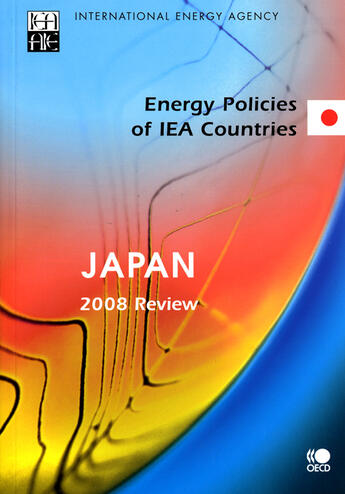-
Date de parution : 12/06/2008
-
Editeur :
Ocde
-
EAN : 9789264043350
-
Série :
(-)
-
Support :
Papier
Résumé:
This review takes an in-depth look at the energy challenges facing Japan today and provides critiques and recommendations for policy improvements to help guide the country towards a more sustainable energy future.
Declaring climate change and environment as a top priority of the 2008 G8... Voir plus
This review takes an in-depth look at the energy challenges facing Japan today and provides critiques and recommendations for policy improvements to help guide the country towards a more sustainable energy future.
Declaring climate change and environment as a top priority of the 2008 G8 Summit in Hokkaido, host country Japan has demonstrated its commitment to pressing ahead in these domains. Already a world leader in advancing energy technology transfer and environmental policy, the country is determined to further improve its domestic policies, moving it towards a more sustainable and secure energy pathway for the long term. Along with other accomplishments, government support for energy R&D is very strong and policies to enhance the efficiency of appliances - both for domestic consumption and export - are models for other countries.
Yet there is still room for progress. Most importantly, a greater reliance on market forces throughout the system could lead customers to choices that enhance security, raise economic efficiency and promote environmental protection. Particularly with respect to climate change goals - Japan is the world's fifth-largest greenhouse gas emitter - strengthening the value on greenhouse gas emissions would help give consumers the appropriate signals they need to make the right choices. Enhancing energy savings through efforts aimed at particular sectors (sectoral approaches) could be a part of the overall policy mix, along with ongoing leadership in promoting energy efficiency. The government should continue to work to complement existing voluntary instruments with stronger ones, including ones that rely more on market incentives, and standards and requirements.
Tables des matières:
1. Executive Summary PART I. POLICY ANALYSIS 2. General Energy Policy -Country Overview -Supply-Demand Balance -Government Regulatory Institutions and Other Organisations -Key Energy Policies -International Collaboration and Leadership -Energy Taxes and Subsidies -Critique -Recommendations 3. Sustainable Energy Policies -Climate Change -Energy Efficiency -Critique -Recommendations 4, Energy Security -By Fuel and Source -Emergency Preparedness -Development of Oil and Gas Transport Infrastructure -Upstream Hydrocarbon Development -Critique -Recommendations PART II. SECTOR ANALYSIS 5. Fossil Fuel -Coal -Oil -Natural Gas -Critique -Recommendations 6. Electricity -Capacity, Generation and Demand -Market Reform -Industry Structure -Costs, Economic Efficiency and Prices 7. Renewables -Supply-Demand Balance -Policies and Measures -Critique -Recommendations 8. Nuclear Energy -Overview -Policy Framework and Regulation -Fuel Cycle and Radioactive Waste Management -Public Acceptance -Critique -Recommendations PART III. ENERGY TECHNOLOGY 9. Energy Research and Development -Overview -Funding -R&D Programmes and Projects -Critique -Recommendations PART IV. ANNEXES Annex A. Organisation of the Review Annex B. Energy Balances and Key Statitsical Data Annex C. International Energy Agency "Shared Goals" Annex D. Glossary and List of Abbreviations
Donner votre avis














